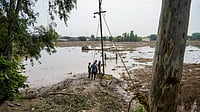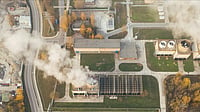A new study published by Nagaland University showed that two varieties of bees native to Nagaland, which produce a high value honey with distinct flavour, are efficient in increasing agricultural yield and crop quality, reported The Hindu.
The two varieties are identified as Tetragonula iridipennis and Lepidotrigona arcifera. Both species of stingless bees, are most efficient among 11 insect varieties recorded foraging on chilli booms in the open “under low hill conditions”.
Citing the study published in the latest issue of the International Journal of Farm Sciences, The Hindu reported that the yield and quality of chilli and other crops increased several times when the stingless bees were introduced as pollinators under greenhouse conditions.
Nagaland is a botanical hot spot region in India with lush green forest covering about 80% of the state and different flowering plants. In Nagaland, stingless bees are reared mostly in districts like Peren, Kohima, Zunheboto, Phek, Tuensang and Mokokchung, as published in International Research Journal on Advanced Science Hub.
Bee Rearing in Nagaland
Nagas have been rearing these bees in hollow log hives for quite a long time, though some beekeepers transfer them to a wooden box as this makes it easier to control the hive. Stingless bees do not sting like the common honey bees. Unlike common honey bees, stingless bees do not sting—they have highly reduced stings that cannot be used for defense. However, they do bite and attack intruders in large numbers when disturbed.
The nest are built from wax mixed with resins collected from trees. In each colony there is a queen, several drones and many worker bees. The queen eggs are laid and raised in brood combs (Fig 1). The stingless bee honey is stored in pots. In the case of common bees the honey is stored in combs. This is the uniqueness of stingless bee.
The Nagas used the stingless honey for the treatment of wounds, injuries, burns, dysentery, cholera, cough, rheumatism. One interesting thing is that when a person is bitten by a snake or by a spider, stingless bee propolis is usually warmed with candle or heated and is applied on the wound. That is how they have been using it as a first aid in the village.



























